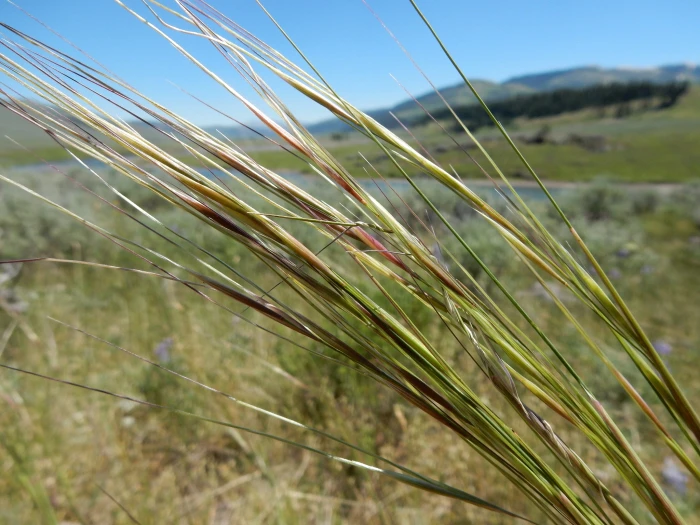Columbia Needlegrass
(Eriocoma nelsonii)
Columbia Needlegrass (Eriocoma nelsonii)
/
/

© Matt Lavin
CC BY 4.0
Image By:
© Matt Lavin
Recorded By:
Copyright:
CC BY 4.0
Copyright Notice:
Photo by: © Matt Lavin | License Type: CC BY 4.0 | License URL: http://creativecommons.org/licenses/by/4.0/ | Uploader: mattlavin | Publisher: iNaturalist |

























Estimated Native Range
Climate Requirements for Cerritos, California
| This Plant | Your Site | Plant Suitability for Your Location | ||
|---|---|---|---|---|
| • Precipitation | 7" - 102" | 14" | Your precipitation may be insufficient for this plant. Irrigate N" / year. | Irrigate N" / year |
| • High Temp. | 59°F - 98°F | 85°F | Your summer temperatures are normal for this plant. | Excellent |
| • Low Temp. | -22°F - 43°F | 45°F | OK, but your winter temperatures are warmer than normal for this plant | OK |
This plant should grow well at your location with about N inches per year (Y minutes per month) of irrigation.
Summary
Eriocoma nelsonii, commonly known as Columbia needlegrass, subalpine needlegrass, and western needlegrass, is a perennial grass that is native to a range of habitats in western North America, including the Yukon and British Columbia, down to California and Texas. It typically grows in leafy clumps reaching up to 69 inches tall and features a narrow panicle inflorescence. Eriocoma nelsonii is particularly adapted to dry open woodlands, grasslands, and shrubsteppe environments, where it often becomes a dominant species. In forest ecosystems of Arizona and New Mexico, it contributes to the understory diversity.
This grass is valued for its resilience to heavy grazing and is often one of the last species to succumb to overgrazing, making it an important forage plant in natural rangelands. Its ability to thrive in a variety of soil types, from well-drained sandy soils to heavier clay loams, and its drought tolerance make it a suitable choice for restoration projects and erosion control. Eriocoma nelsonii prefers full sun to partial shade and requires minimal water once established, making it a low-maintenance option for xeriscaping. While it does not have notable issues with diseases or pests, its aggressive self-seeding can be a concern in garden settings where uncontrolled spread is undesirable.CC BY-SA 4.0
This grass is valued for its resilience to heavy grazing and is often one of the last species to succumb to overgrazing, making it an important forage plant in natural rangelands. Its ability to thrive in a variety of soil types, from well-drained sandy soils to heavier clay loams, and its drought tolerance make it a suitable choice for restoration projects and erosion control. Eriocoma nelsonii prefers full sun to partial shade and requires minimal water once established, making it a low-maintenance option for xeriscaping. While it does not have notable issues with diseases or pests, its aggressive self-seeding can be a concern in garden settings where uncontrolled spread is undesirable.CC BY-SA 4.0
Plant Description
- Plant Type: Grass
- Height: 1-2 feet
- Width: 1-2 feet
- Growth Rate: Moderate
- Flower Color: N/A
- Flowering Season: Summer
- Leaf Retention: Deciduous
Growth Requirements
- Sun: Full Sun
- Water: Low
- Drainage: Fast
Common Uses
Drought Tolerant, Low Maintenance
Natural Habitat
Dry open woodlands, grasslands, and shrubsteppe environments
Other Names
Common Names: Nelson’s Bristlegrass, Nelson’s Foxtail
Scientific Names: Eriocoma nelsonii, Achnatherum nelsonii, Stipa columbiana subsp. nelsonii, Stipa columbiana var. nelsonii, Stipa nelsonii, Stipa occidentalis var. nelsonii
GBIF Accepted Name: Eriocoma nelsonii